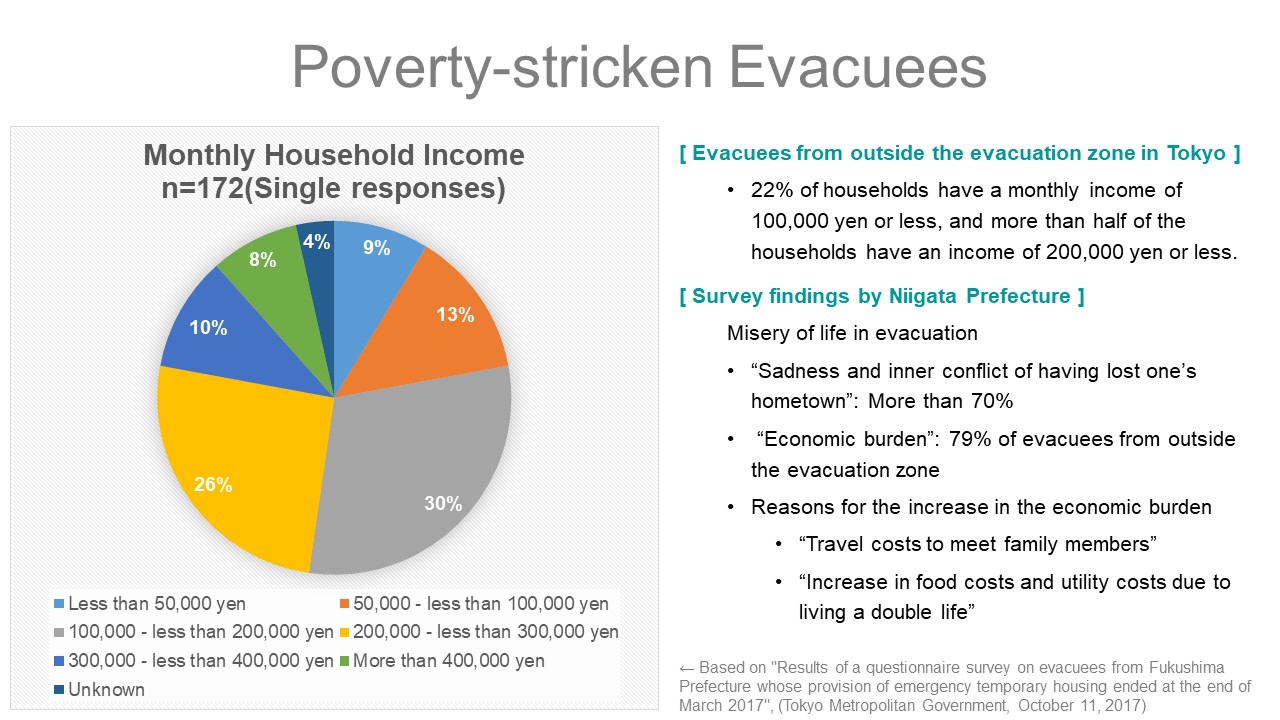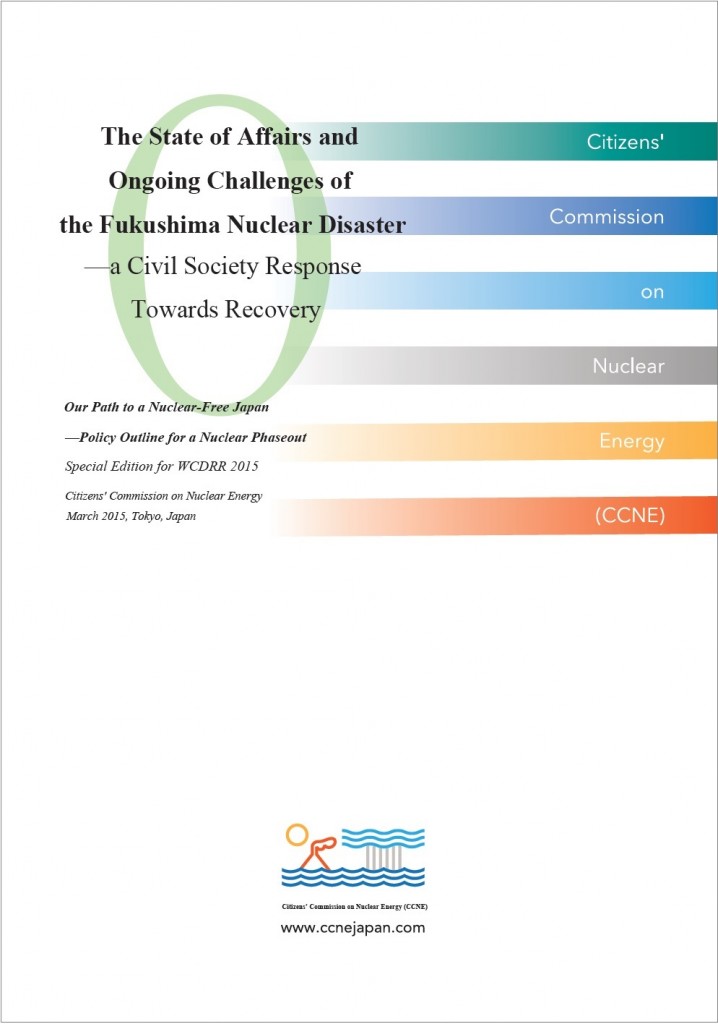2. “Invisiblization” of the Damage and the Ending of Support for Evacuees
In the years since the accident at the Fukushima Daiichi Nuclear Power Plant, efforts have been ongoing to make the damage caused by the accident invisible. One remarkable example of this is the number of evacuees from the nuclear accident and their actual situation.
![]() The number of nuclear accident evacuees
The number of nuclear accident evacuees
The number of evacuees from Fukushima Prefecture was reported to be 31,148 as of November 2019 (Reconstruction Agency). As this number had fallen to something over 160,000 people as of May 2012, the number of evacuees appears to have decreased significantly. In reality, however, many evacuees are not included in this figure.
![]() Actual situation of evacuees due to the nuclear accident
Actual situation of evacuees due to the nuclear accident
Despite repeated requests from organizations supporting the evacuees, the Reconstruction Agency has not conducted a survey to discover the true situation regarding people who have evacuated from Fukushima. Surveys conducted by several local governments provide a glimpse of the harsh situation in which evacuees are placed.
(1)Survey by the Tokyo Metropolitan Government*1
| Subjects of the survey | 570 households to whom it was possible to send the documents by mail. These households had evacuated from Fukushima Prefecture, but had left emergency temporary housing when provision of the housing ended at the end of March 2017. (As of April 1, 2016, a total of 629 households were living in emergency temporary housing provided by the Tokyo Metropolitan Government.) The number of responses was 172 (response rate: 30.2%). |
| Result | Households earning 100,000 yen a month or less accounted for 22% of the total, while those earning 200,000 yen a month or less accounted for more than half of the total. |
(2)Survey by Niigata Prefecture*2
| Survey Method | Associate Professor Wakana Takahashi of Utsunomiya University conducted a survey based on statements made by all 237 plaintiffs who evacuated to Niigata Prefecture and who filed lawsuits seeking compensation for damages caused by the nuclear accident. |
| Result | Having lived in evacuation for a long period, more than 70% of the respondents cited “Sorrow and conflict over the loss of the hometown” regarding the hardship of their lives in evacuation. Of the evacuees from outside the government evacuation zone, nearly 80% cited “economic burden.“ |

![]() Termination of provision of housing
Termination of provision of housing
Despite the hard situation evacuees have been placed in, the national government has not taken any measures to support the lives of evacuees, and Fukushima Prefecture has gradually ceased to provide housing to evacuees, as shown below.
| March 2017 | Termination of housing provision for evacuees from outside the evacuation zone |
| March 2019 | Termination of housing provision for – evacuees from outside the evacuation zone who were receiving rent support for low-income evacuees or who were permitted to live in housing for national government employees for a fee, – evacuees from areas where the evacuation order has been cancelled |
March 2020 | Termination of housing provision for evacuees from difficult-to-return zones |
Considering the circumstances of evacuees’ lives, the government should continue not only to provide housing, but also provide more additional support.


